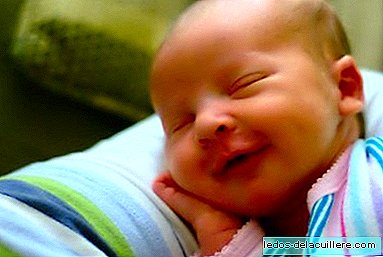
After talking about behaviorism, we continue with another of the theories about the acquisition and development of language in the baby.
This time it's the turn of the Innatist Theory, defended by the American linguist, philosopher and activist Avran Noam Chomsky who attacked through his first work, derived from his doctoral thesis, to the ideas defended by the Behavioral Theory and which were followed at that time.
Chomsky states that there is an innate device located in the brain, the Device for the Acquisition of Language, which allows to learn and use language almost instinctively, also checking that the general principles of grammar are universal for all human beings, defending thus the existence of a Universal Grammar.
For the followers of the Innatist Theory, language is something innate of the human being, and not something learned, how he defended behaviorism. That is, language is acquired because human beings are biologically programmed for it, regardless of the degree of difficulty of the language.
The principles that this theory defends with respect to the rest are that:
- Language learning is something specific to the human being.
- Imitation has few effects when it comes to learning language.
- Children's verbal emissions are not responses learned from other people.
- the existence of a great similarity in the linguistic development among children of the same age, although the language is different.
- the great ease with which language is acquired and developed in the child.
What is the Device for Language Acquisition?
In order to explain the Innatist Theory of language, the concept of Device for the acquisition of Language is proposed, which would be something similar to an innate linguistic processor where there is a recorded universal grammar or, in other words, knowledge of the rules present in all languages.
The existence of this universal grammar means that there is a series of similar grammar rules for all languages. Although this does not mean that all natural languages have the same grammar.
For each language, this Device for the Acquisition of Language is able to receive the linguistic stimuli of the child's environment and, from them, derive the universal grammatical rules that make up the language and thus form new and well structured sentences.
In other words, The Language Acquisition Device programs the brain to analyze the language heard and extract these rules, specific to each environment.
Children do not need any type of learning to acquire language, since it is obtained and developed based on a universal language acquisition mechanism, specific to the human race, preprogrammed in each one that begins to develop immediately when exposed to the environment.
So, the language exposure used in your environment is the only requirement necessary to acquire language. Although it is true that this theory also speaks of a critical period for language acquisition from which it would be very difficult to develop language.
Strengths and Weaknesses
Some of the arguments used to defend this theory are:
However, this theory also has some weaknesses, such as that does not explain the language acquisition mechanism itself. Instead, it resembles a kind of specialized biological organ.
On the other hand, innatism does not give relevance to cognitive and social factors in the process of acquisition and development of language in the child.
Conclusion
From the point of view of this theory, language is an independent faculty of intelligence, where there are universal principles to which all human languages obey; that is, a Universal Grammar.
The Innatista Theory has been of great importance since it has contributed to the knowledge about the origin of children's language. This contribution has not only led to an enrichment of the existing approaches until then, but also because it has led to many investigations.
Thanks to these, which were carried out both to verify and validate the foundations of innatism and to identify where it failed, new perspectives and theories have emerged that complement the explanations of this Innatist Theory.
Soon, after getting a little closer to behavioral and innatist theories, we will talk about anothertheory about the acquisition and development of language in the baby: the cognitivism of the Swiss psychologist Jean Piaget.












